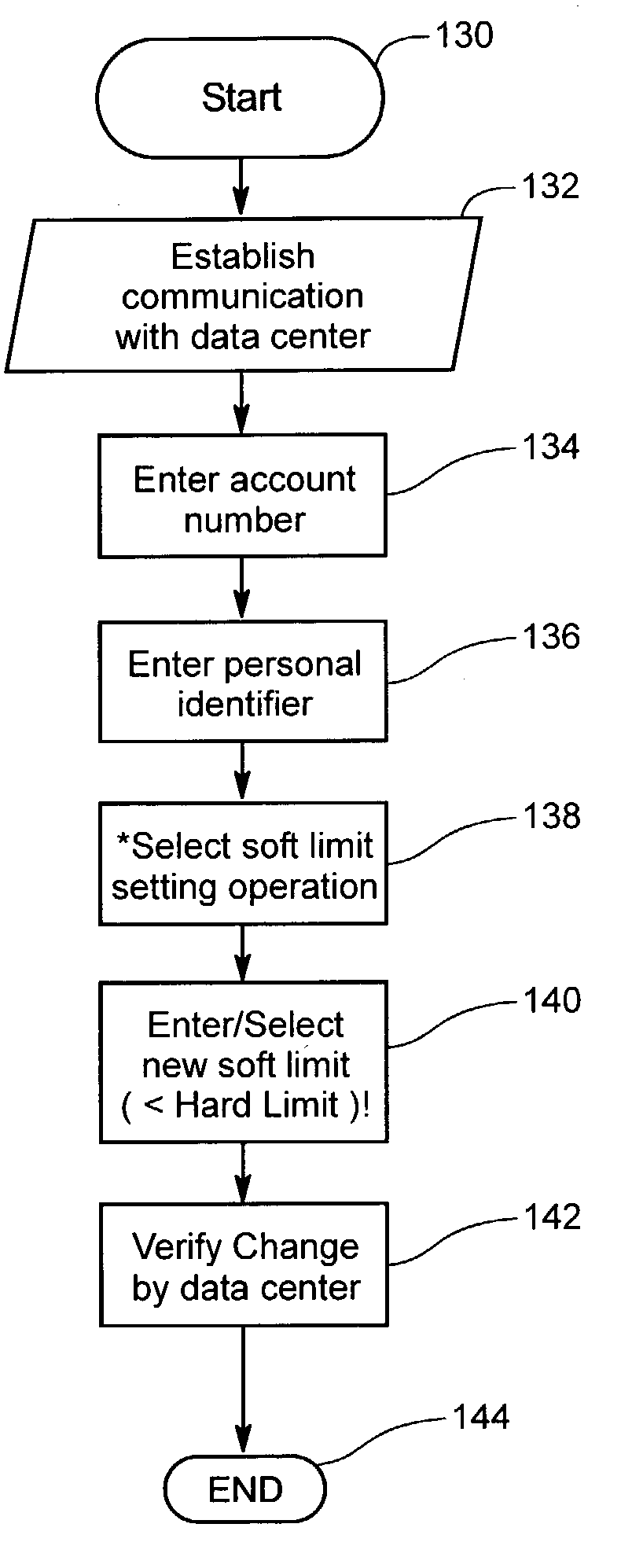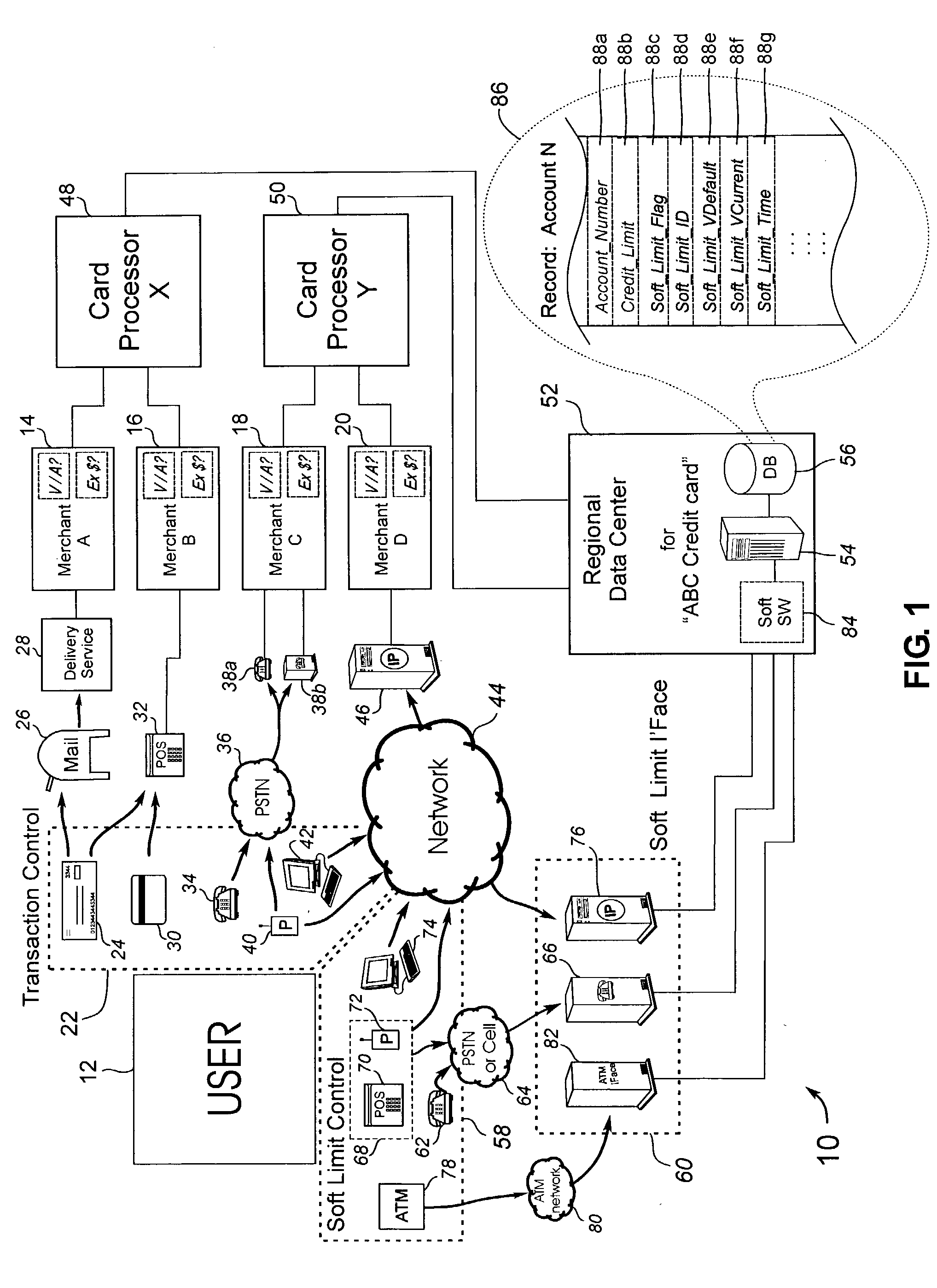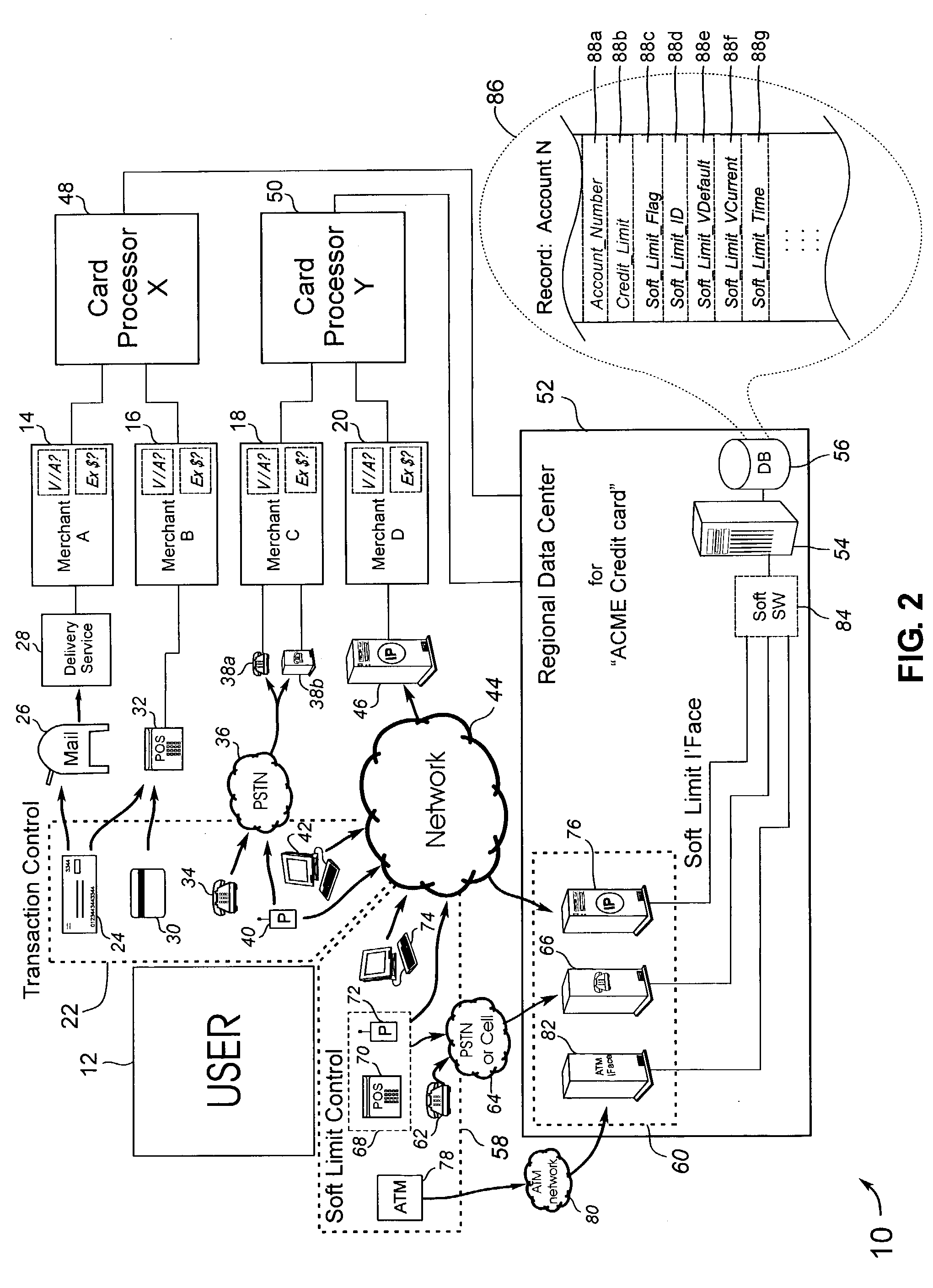Automated soft limit control of electronic transaction accounts
a technology of electronic transaction accounts and soft limit control, applied in the field of financial account control, can solve the problems of a loss of a billion dollars by banks each year, the cost of annual check fraud is about $1 per check, and the fraud rate is especially high for banks
- Summary
- Abstract
- Description
- Claims
- Application Information
AI Technical Summary
Benefits of technology
Problems solved by technology
Method used
Image
Examples
Embodiment Construction
)
[0164] Referring more specifically to the drawings, for illustrative purposes the present invention is embodied in the apparatus generally shown in FIG. 1 through FIG. 5. The detailed description exemplifies specific embodiments of the invention which are described in sufficient detail so as to allow a person of ordinary skill in the art to practice the invention without undue experimentation. It will be appreciated that the apparatus may vary as to configuration and as to details of the parts without departing from the basic concepts as disclosed herein.
[0165] Transaction execution is herein considered to be the event which generally takes place subsequent to the allowance or acceptance of a transaction. For example, during a purchase transaction with a credit card, the charge is authorized (e.g. found in a database query of one or more databases, such as the data center of the credit card company or issuing institution) and then the charge is executed by electronically submitting...
PUM
 Login to View More
Login to View More Abstract
Description
Claims
Application Information
 Login to View More
Login to View More - R&D
- Intellectual Property
- Life Sciences
- Materials
- Tech Scout
- Unparalleled Data Quality
- Higher Quality Content
- 60% Fewer Hallucinations
Browse by: Latest US Patents, China's latest patents, Technical Efficacy Thesaurus, Application Domain, Technology Topic, Popular Technical Reports.
© 2025 PatSnap. All rights reserved.Legal|Privacy policy|Modern Slavery Act Transparency Statement|Sitemap|About US| Contact US: help@patsnap.com



